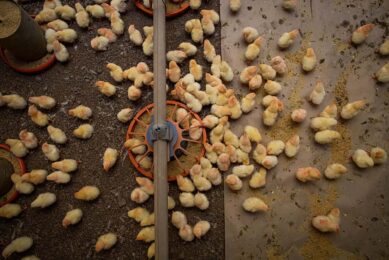Case study: China’s Year of the Rooster looking foul

While 2017 may be the Year of the Rooster in China, forecasts suggest that the country’s poultry sector will continue its two-year decline, and all facets of Chinese poultry will likely be affected by China’s response to continued Avian Influenza (AI) detections, both within China and overseas.
In terms of production, despite the continued modernisation of China’s production industry, these potential gains have been offset by China’s AI bans against key suppliers of grandparent stock (e.g., the United States and France), according to a recent USDA Gains report.
Impact of AI on poultry sector
The bans as a result of AI detection have caused significant disruptions in domestic white-feathered poultry production that will likely continue constrain production throughout 2017.
In addition, outbreaks of AI in China among the human population have been linked to traditional live poultry markets, the most popular outlet for Chinese yellow-feathered poultry, leading to a number of bans on live poultry markets and lessening yellowbird demand. Also due to the AI ban against the United States and many European broiler meat importers, poultry imports from a few South American countries and Poland have skyrocketed.
Types of poultry production in China
China’s domestic poultry production is composed of four different types: yellow-feathered birds, white-feathered birds, mixed (yellow and white), and culled egg-layers (see Figure 1). In terms of geography, yellow birds are generally produced in the South and white birds in the North. Shandong Province is by far the largest poultry producing province, producing over 15% of China’s total broiler production.
However, in terms of growth among the major producing regions, Sichuan, Fujian, Liaoning, and Anhui Provinces have experienced strong growth, driven in large part by the consolidation of the industry (see Table 1). Large poultry producers, like the Fujian Sunner Group have been expanding and modernising its operations.
In addition, the traditional poultry producing provinces of Guangdong and Jiangsu have seen poultry production drop significantly (Guangdong’s and Jiangsu’s production numbers each tumbled by 13% in the last 5 years). This drop is attributable to two main factors: environmental concerns around highly populated urban centres and a shift in production from South to North, yellow to white.
Shift in consumption preferences
The slow shift from yellow to white bird production is explained by the increased productivity (and therefore profitability) of white bird production, a shift away from traditional Chinese consumption preferences, and increased biosafety concerns regarding AI transmission in traditional live poultry markets.
The recent production gains made possible by this shift to white bird production are currently offset by several factors, the most notable of which are the current Chinese bans on new grandparent breeding stock from the United States and several EU countries. As a result of these constraining factors, a continuing decrease in overall broiler production is forecast.
Grandparent stock the largest concern
The lack of new grandparent breeding stock for white bird flocks will remain the greatest obstacle to increasing domestic poultry production (see Table 2). The majority of Chinese white bird breeding stock is imported from abroad and most major suppliers have been cut off as a result of AI detections in their home country. In January 2015, the United States, which supplied 90% of China’s white bird grandparent stock in 2014, was banned from exporting breeding stock to China (and most all other poultry and poultry products).
Currently, the only large producers which are able to import live breeding stock into China are New Zealand and Spain. However, this supply is currently insufficient to meet the needs of China’s poultry industry and overall breeding stocks continue to decline. In response to this new AI trading risk, the Chinese poultry industry is attempting to develop a domestic breeding industry. A large Chinese poultry firm Shandong Yisheng, recently signed a US$ 10 million dollar, three-year contract with the French genetics firm Hubbard to import greatgrandparent stock, primarily from France, but also from other locations located around the world that are unaffected by the ban. However, this strategy requires significant scientific and technical expertise which the Chinese poultry industry cannot yet implement on a large, commercially-viable scale.
Source: USDA Gain report
Join 31,000+ subscribers
Subscribe to our newsletter to stay updated about all the need-to-know content in the poultry sector, three times a week. Beheer
Beheer








 WP Admin
WP Admin  Bewerk bericht
Bewerk bericht